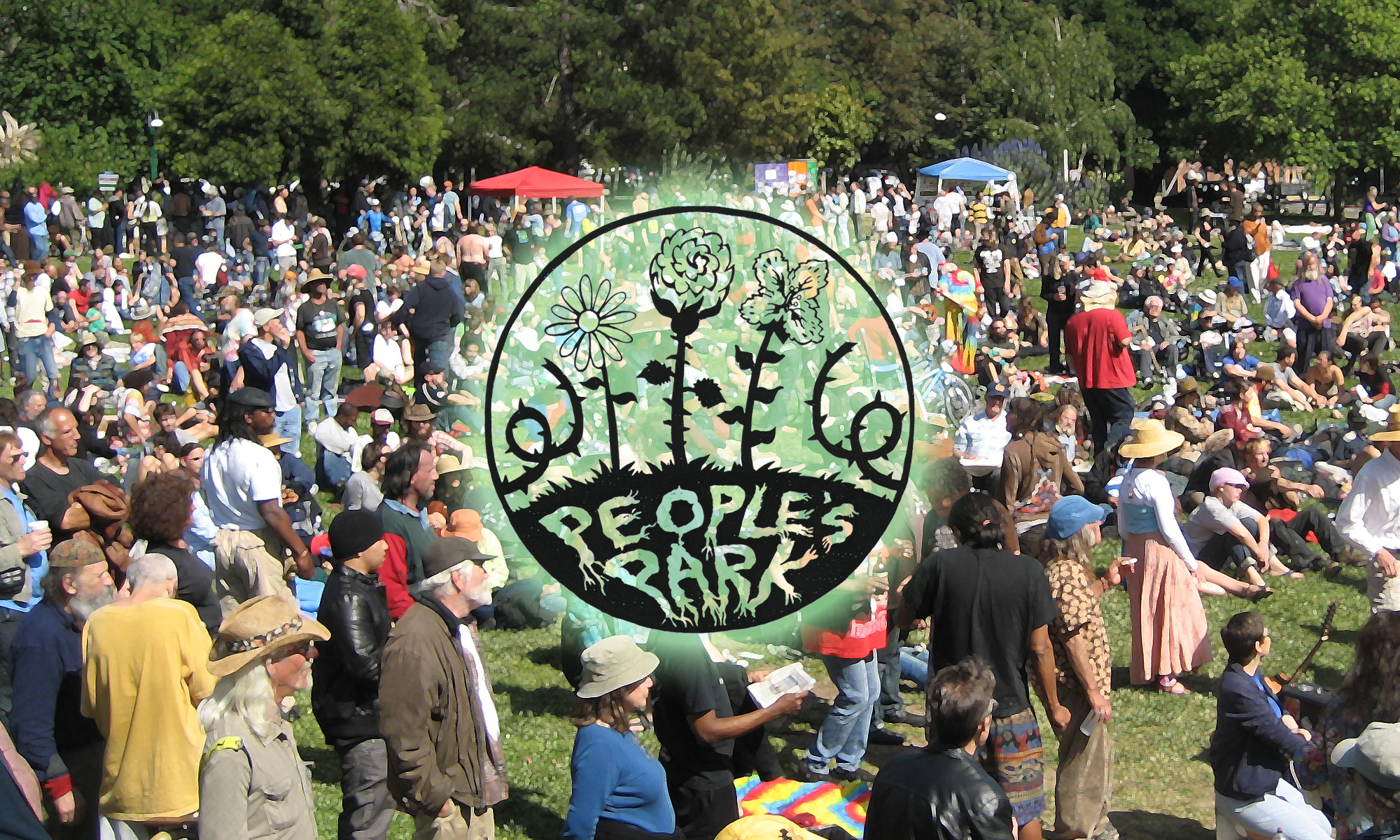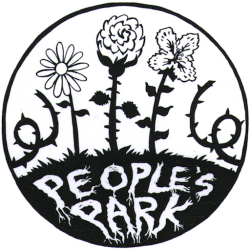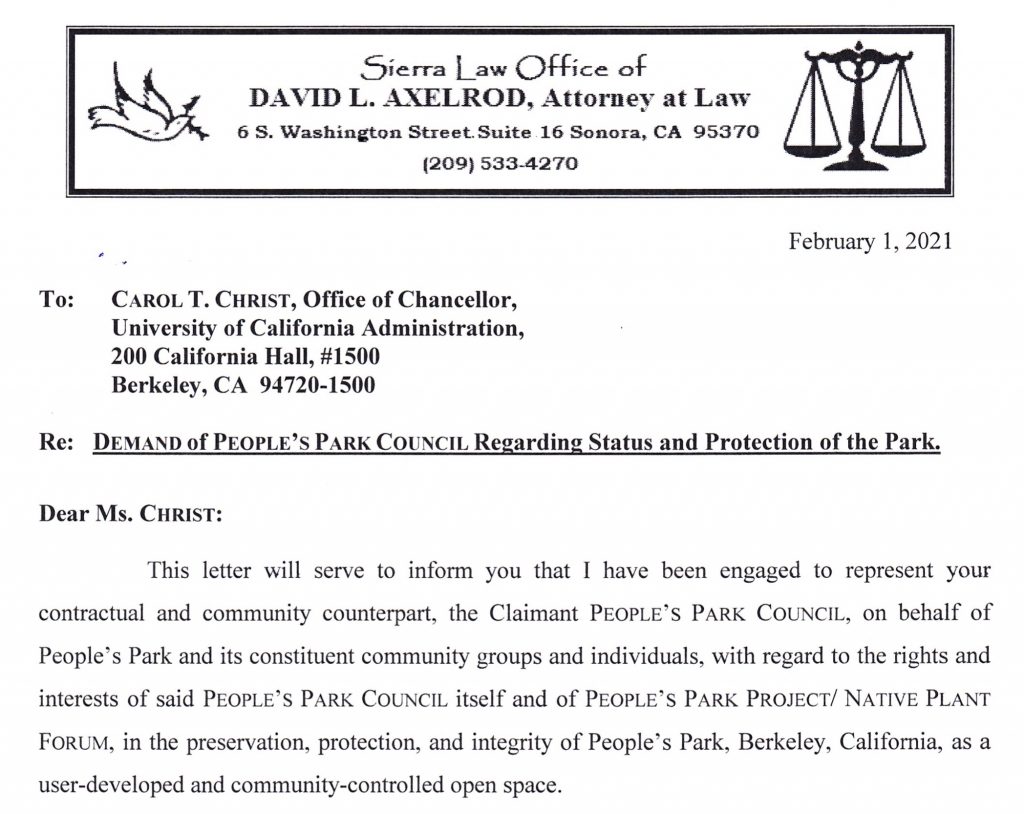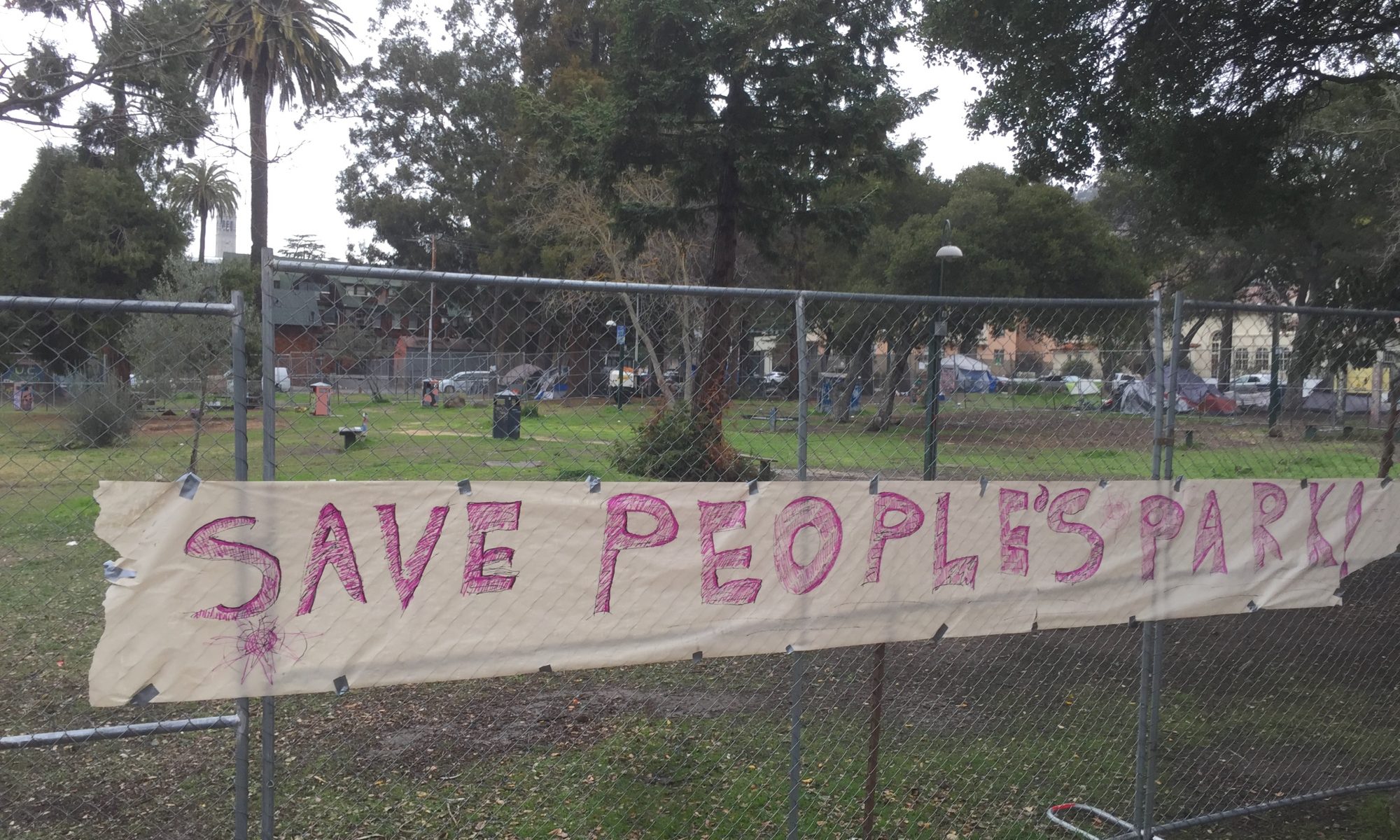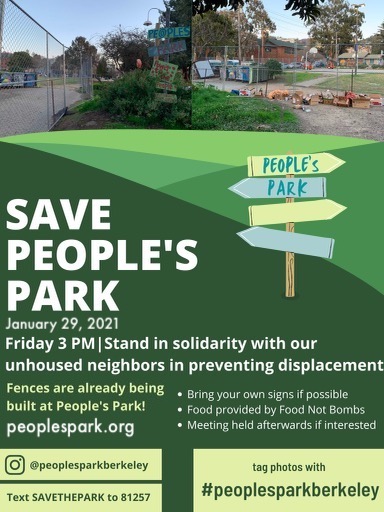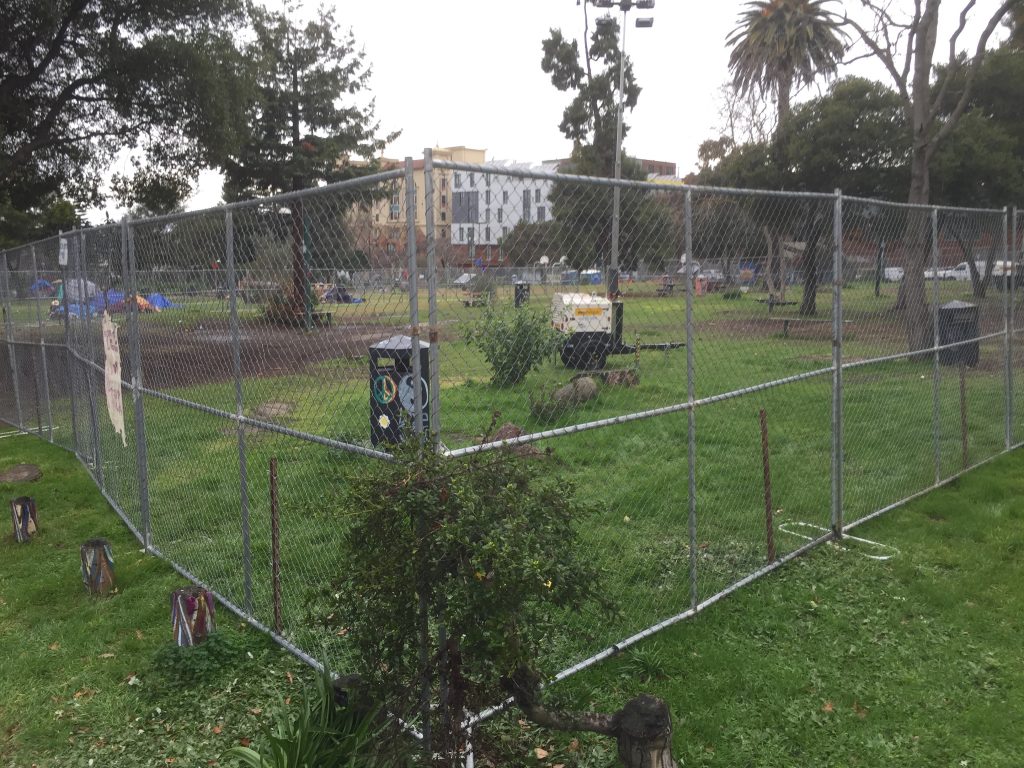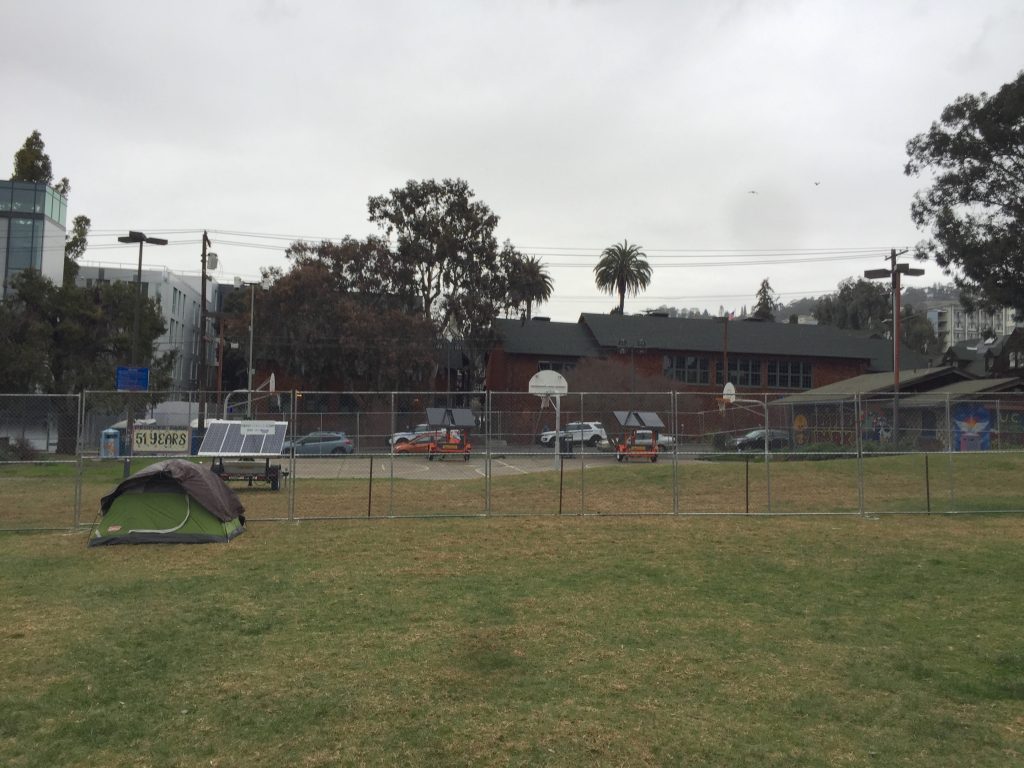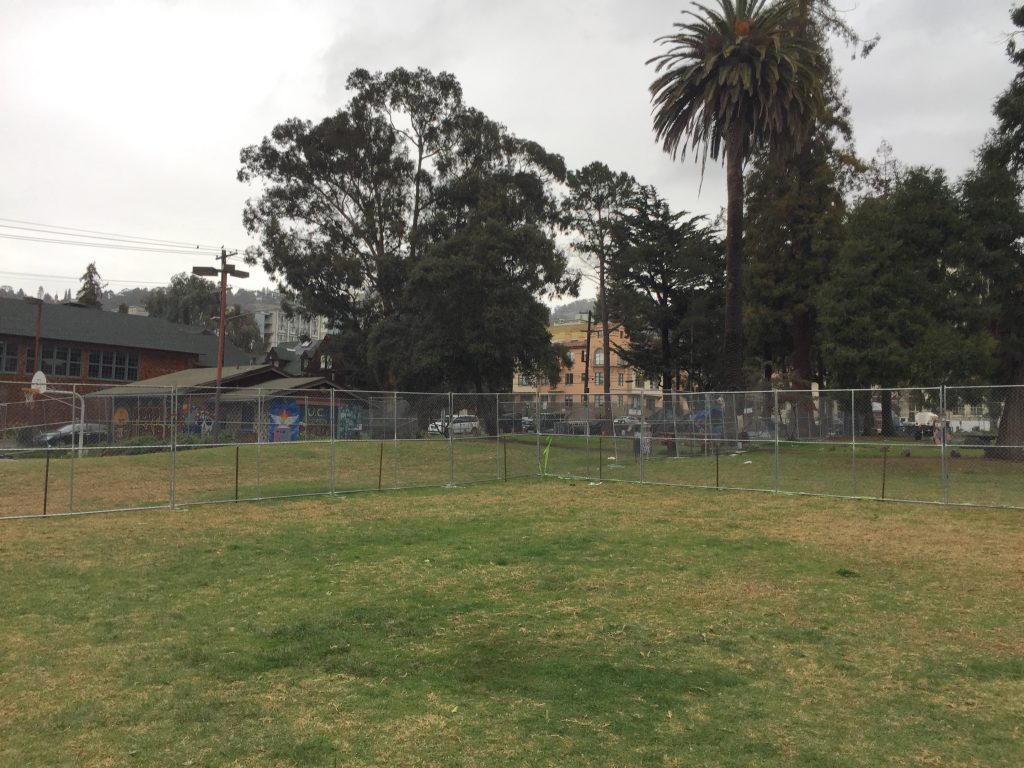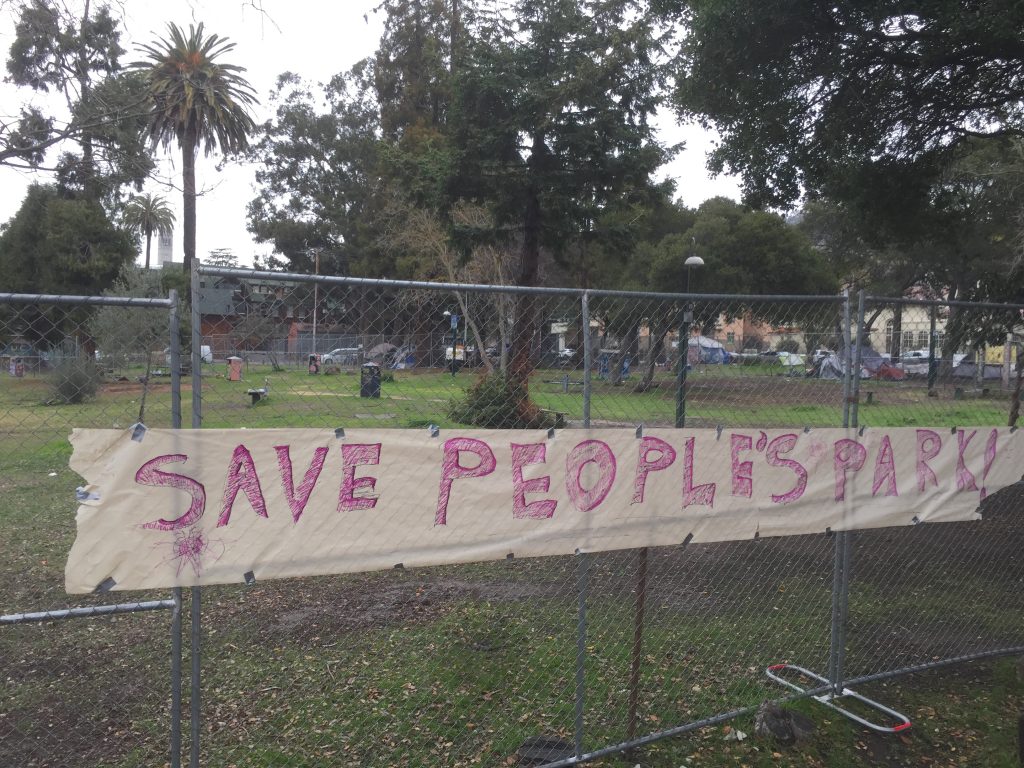Office of the Chancellor University of California, Berkeley
200 California Hall #1500 Berkeley, CA 94702
Dear Chancellor Christ,
Since sheltering in place is currently the best way to limit spread of the Covid-19 virus, we are asking that you adopt the CDC recommendations and suspend enforcement of anti-camping type laws for now. Since you already have unhoused students and community members camping in the park, it would be in the public interest for you to work to help them to be safe or at least as safe as can be under the current circumstances. We believe that extra vigilance regarding conditions in the park is required at this time. It is NOT acceptable to ignore conditions or simply use the current crisis as a pretense for closing the park.
Everyday, this very fragile population struggles to survive, but now they have seen their access to businesses, social services, food, public restrooms and even spare change evaporate. Of course, they are spending more time in People’s Park. However, the dangerous, unsanitary conditions that U.C. has imposed on the park by lack of maintenance endanger everybody. Fortunately, a few local Mutual Aid volunteers provided some toilet paper and supplies over the weekend; supplies which UC is more than capable of providing.
The UC is not doing enough to help park users reduce their exposure to the virus. The highly used bathrooms are rarely cleaned or disinfected and toilet paper is often scarce. Simple hand washing is extremely difficult to do because of the ridiculously small (less than 2 inch long) “faucets” that do not allow users even to place their hands under a flow of water. Soap is not provided and paper towels are non-existent. The risk of spreading the virus throughout this community is huge and it is the responsibility of the university to direct the resources needed to be at least a responsible property owner if not a responsible, moral resident of our community.
Evictions have been suspended in California for the time being so we do not expect that the numbers of actual campers will increase. All we are asking is for the University of California to do its part in a time of crisis for those currently camped. The fact is that for years, the People’s Park community has been tragically underserved by the University. While we acknowledge and are glad that there is now a social worker assigned to support people in the park, we believe that more must be done.
We demand the following:
- Utilize People’s Park as an emergency outdoor shelter for the duration of the shelter in place order. As CDC recommends, DO NOT remove encampments or threaten park users with citations for lodging. Facilitate healthy conditions for unhoused people in the park during this crisis.
- Provide 24 hour access to the restrooms.
- Provide regular cleanings of the restrooms. With such high usage, bathrooms need to be cleaned and disinfected SEVERAL times each day.
- Supply the restrooms with soap, toilet paper and hand sanitizer.
- Repair the faucets in the restrooms so that people can actually wash their hands. The current “faucets” are approximately 2 inches long and do not protrude enough from the wall to enable CDC recommended hand washing practices.
- Provide access to water for drinking. There are already spigots and hoses. Ensure that water is accessible and turned on.
- Allow Food Not Bombs to serve food to residents of the park who have extremely limited access to food and are already reporting hunger and scarcity in the Telegraph Avenue area. Order police not to interfere with these efforts and do what you can to support the orderly delivery of food and efforts by the community to feed people in a low risk manner.
Sincerely,
Jackie Barshak (DSA San Francisco chapter*)
Russell Bates (People’s Park Committee, member*)
Barbara Brust (Consider the Homeless*)
boona cheema (Berkeley Mental Health Commissioner*)
Isis Feral (Coalition to Defend East Bay Forests, member*)
Arthur Fonseca (Picuris Pueblo Senior Center Service Provider)
Charles Gary (Community Services United Board member*)
Judith Gips (People’s Park Committee, member*)
Hali D. Hammer (People’s Park Committee, member*)
Aidan Hill (Vice-Chair City of Berkeley Homeless Commission*)
Greg Jalbert (friend of People’s Park for 20 years*)
Joe Liesner (Food Not Bombs*)
Thomas Lord
Dr. James McFadden (UC Berkeley Research Physicist)
National Lawyers Guild- San Francisco
Peyton Provenzano (Berkeley Copwatch and PhD student at Berkeley Law*)
Erick Morales (People’s Park Committee, member*)
Andrea Prichett (Berkeley Copwatch*)
Paul Prosseda (People’s Park Committee*)
Lisa Teague (People’s Park Committee, member*)
Max Ventura (People’s Park Committee, member*)
dress wedding (Food Not Bombs, member*, Harborside Cannabis Dispensary co-founder)
* Organizations listed for identification only
Cc: Mayor Jesse Arreguin and Berkeley City Council
Paul Buddenhagen, Deputy City Manager
